Early childhood experts Dr. Allison Gopnik and Erika Chistakis, drawing upon decades of cognitive science, urge us to view young children as powerful learning machines. Preschoolers learn, they say, by making meaning of all they encounter in the world around them. In our preschool 3 classroom, that is exactly what teachers see — children continuously engaged in efforts to grasp what they have witnessed. By creating, questioning, and planning with one another, they comprehend bits of their world.
 One day on Mr. Rocky’s Field these boys saw a couple of mounds of snow, and the shapes reminded them of a sled or snowmobile. So, they climbed on! Can you feel them zooming down the road?
One day on Mr. Rocky’s Field these boys saw a couple of mounds of snow, and the shapes reminded them of a sled or snowmobile. So, they climbed on! Can you feel them zooming down the road?
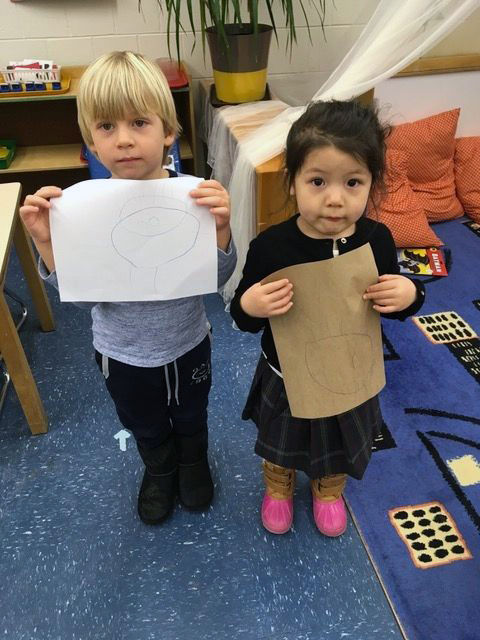 We witness meaning-making in early self portraits, when children grab a crayon, draw circles and lines, and then declare, “This is me!”
We witness meaning-making in early self portraits, when children grab a crayon, draw circles and lines, and then declare, “This is me!”
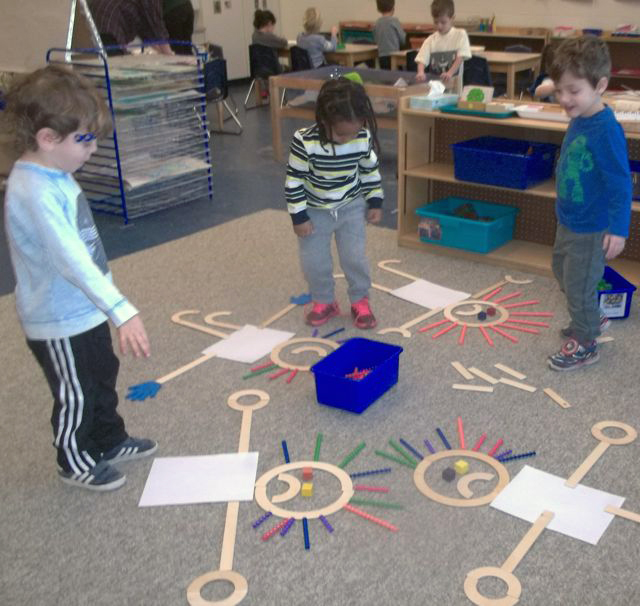 At one point we introduced the children to lines and curves, using the wooden “Handwriting Without Tears” materials. Now we see children choosing those and other materials to represent themselves physically. One child’s idea for hair is enthusiastically picked up by the others.
At one point we introduced the children to lines and curves, using the wooden “Handwriting Without Tears” materials. Now we see children choosing those and other materials to represent themselves physically. One child’s idea for hair is enthusiastically picked up by the others.
 We observe, too, those initial moments when a child figures out how to make “my letter!”
We observe, too, those initial moments when a child figures out how to make “my letter!”
 In January we started an attendance chart. The children quickly pick up clues (short name? long name? three Ns?) to help them choose which is theirs. They also note that the first letter in each name is red.
In January we started an attendance chart. The children quickly pick up clues (short name? long name? three Ns?) to help them choose which is theirs. They also note that the first letter in each name is red.
 We subsequently created a name-matching game. It is a real challenge to play (three J names and three K names!), but our curious learners are drawn to recognizing the names of their peers. Playing the game also plants the idea that letters stand for sounds.
We subsequently created a name-matching game. It is a real challenge to play (three J names and three K names!), but our curious learners are drawn to recognizing the names of their peers. Playing the game also plants the idea that letters stand for sounds.
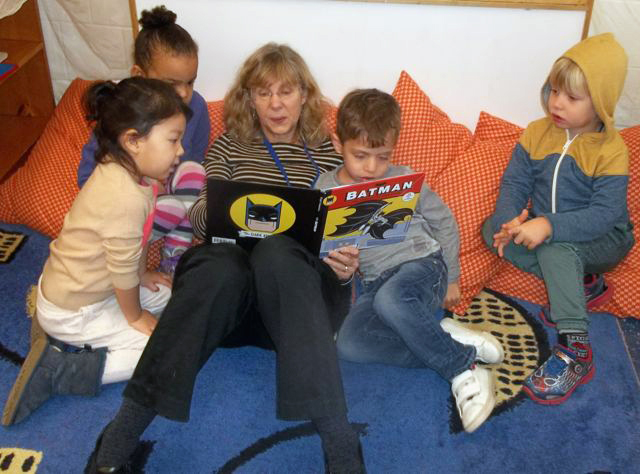 Superheroes are now more popular than ever in our culture, and our preschoolers are fascinated by them. This Batman book has grown quite worn with use. By pretending to be superheroes, the children transform themselves from beings who often need help (to zip their jackets, tie their shoes) to beings who create order and safety.
Superheroes are now more popular than ever in our culture, and our preschoolers are fascinated by them. This Batman book has grown quite worn with use. By pretending to be superheroes, the children transform themselves from beings who often need help (to zip their jackets, tie their shoes) to beings who create order and safety.
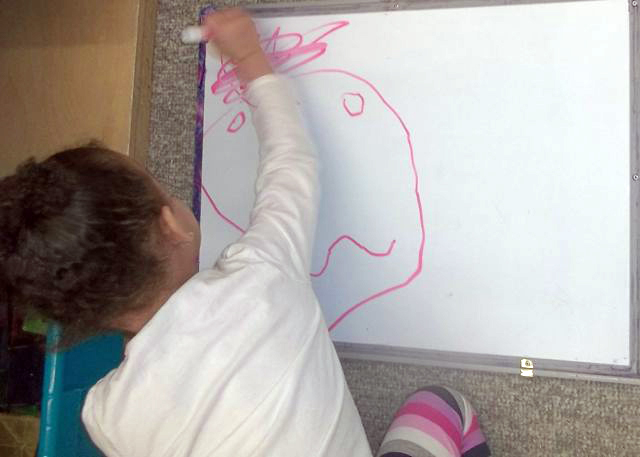 This child is drawing “a monster” — being creative while also perhaps taking control of something fearful.
This child is drawing “a monster” — being creative while also perhaps taking control of something fearful.
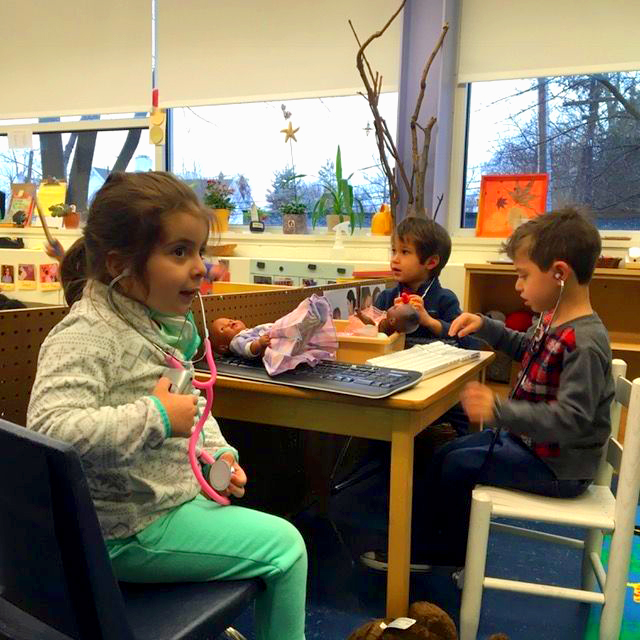 By imitating adults at work, children feel powerful. Our dramatic play area has turned into a doctor’s office. The patients are usually teachers or dolls. The children are inspired by the various medical instruments we have, and also may be remembering what they’ve experienced at their own visits to the doctor.
By imitating adults at work, children feel powerful. Our dramatic play area has turned into a doctor’s office. The patients are usually teachers or dolls. The children are inspired by the various medical instruments we have, and also may be remembering what they’ve experienced at their own visits to the doctor.
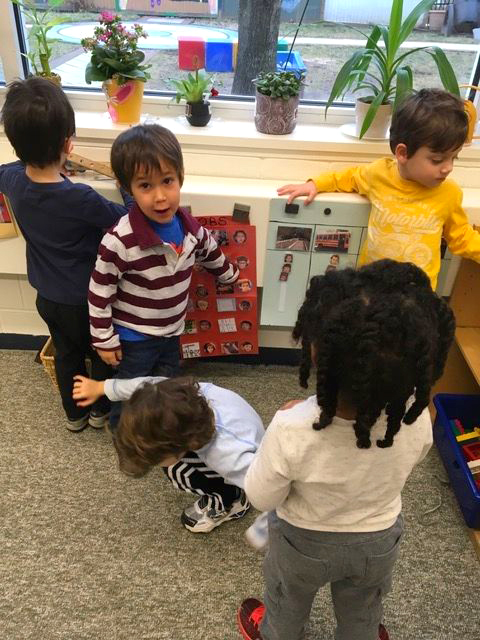 Pretending to have a job feels important, and so does having a job in the classroom. We started our job chart this month.
Pretending to have a job feels important, and so does having a job in the classroom. We started our job chart this month.
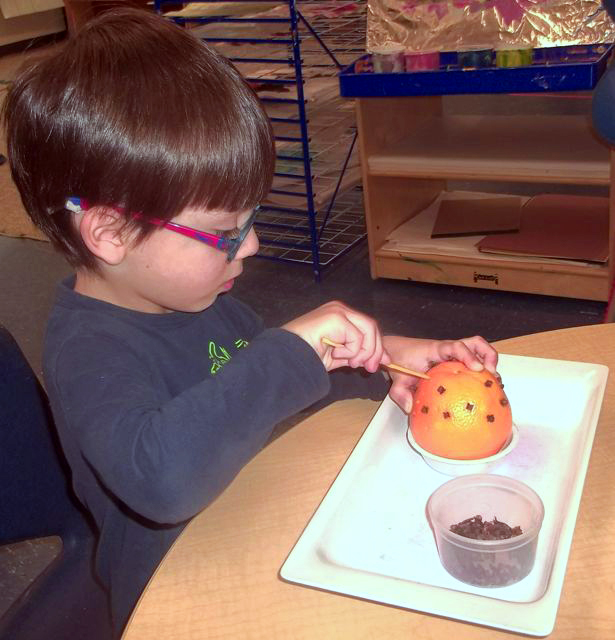 The children have myriad opportunities to attempt simple, specific tasks that a teacher has demonstrated. They watch the process, try to follow it themselves, and simultaneously are honing their pre-writing skills. The reward is a feeling of mastery.
The children have myriad opportunities to attempt simple, specific tasks that a teacher has demonstrated. They watch the process, try to follow it themselves, and simultaneously are honing their pre-writing skills. The reward is a feeling of mastery.
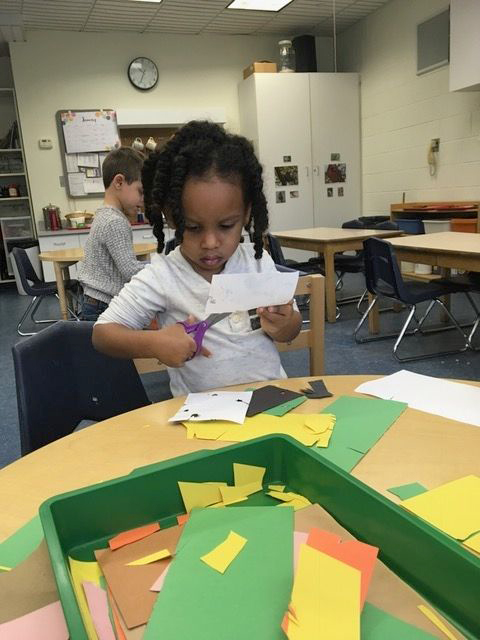 Other skills are more open-ended. For us, scissors are an ordinary tool that we use without thinking. For a 3-year-old, it is incredibly exciting to “get” how scissors work, and a child can spend many minutes fringing the side of a piece of paper or snipping paper into little pieces. What has been cut is not important; it is the cutting itself that matters.
Other skills are more open-ended. For us, scissors are an ordinary tool that we use without thinking. For a 3-year-old, it is incredibly exciting to “get” how scissors work, and a child can spend many minutes fringing the side of a piece of paper or snipping paper into little pieces. What has been cut is not important; it is the cutting itself that matters.
The growth we observe in our preschoolers from September to June is enormous. To behold them discovering their abilities is a privilege, and to share in their consequent delight is a joy.
Lorraine Yamin, Mary Cushman and Marisa Teply
Preschool 3 Teachers
